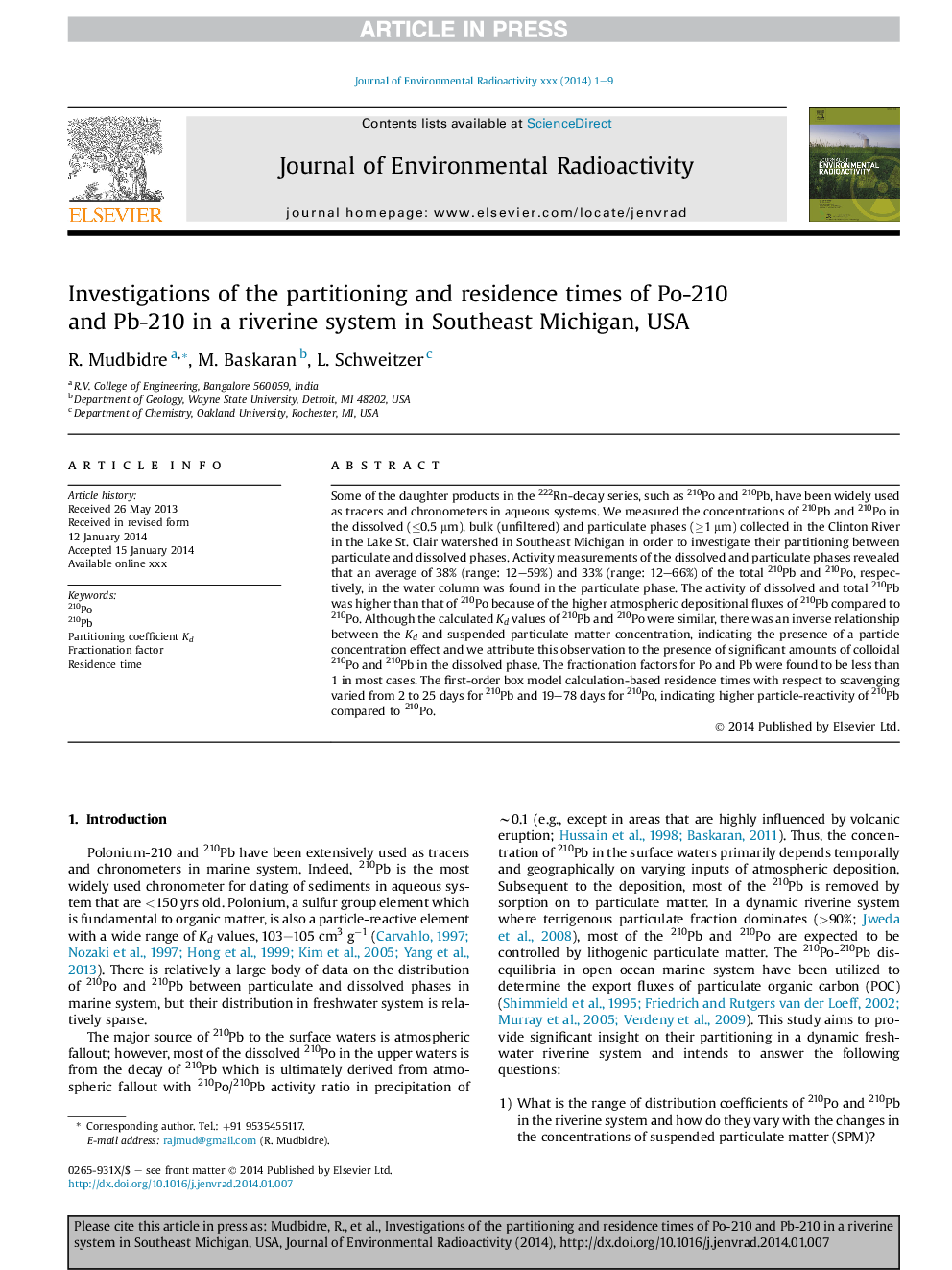| Article ID | Journal | Published Year | Pages | File Type |
|---|---|---|---|---|
| 8082865 | Journal of Environmental Radioactivity | 2014 | 9 Pages |
Abstract
Some of the daughter products in the 222Rn-decay series, such as 210Po and 210Pb, have been widely used as tracers and chronometers in aqueous systems. We measured the concentrations of 210Pb and 210Po in the dissolved (â¤0.5 μm), bulk (unfiltered) and particulate phases (â¥1 μm) collected in the Clinton River in the Lake St. Clair watershed in Southeast Michigan in order to investigate their partitioning between particulate and dissolved phases. Activity measurements of the dissolved and particulate phases revealed that an average of 38% (range: 12-59%) and 33% (range: 12-66%) of the total 210Pb and 210Po, respectively, in the water column was found in the particulate phase. The activity of dissolved and total 210Pb was higher than that of 210Po because of the higher atmospheric depositional fluxes of 210Pb compared to 210Po. Although the calculated Kd values of 210Pb and 210Po were similar, there was an inverse relationship between the Kd and suspended particulate matter concentration, indicating the presence of a particle concentration effect and we attribute this observation to the presence of significant amounts of colloidal 210Po and 210Pb in the dissolved phase. The fractionation factors for Po and Pb were found to be less than 1 in most cases. The first-order box model calculation-based residence times with respect to scavenging varied from 2 to 25 days for 210Pb and 19-78 days for 210Po, indicating higher particle-reactivity of 210Pb compared to 210Po.
Related Topics
Physical Sciences and Engineering
Energy
Nuclear Energy and Engineering
Authors
R. Mudbidre, M. Baskaran, L. Schweitzer,
